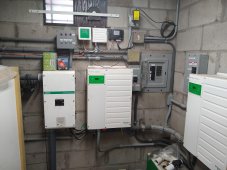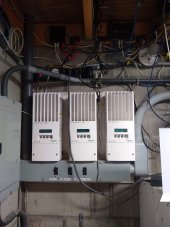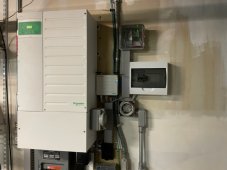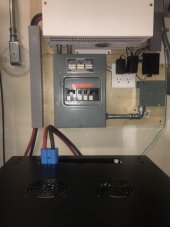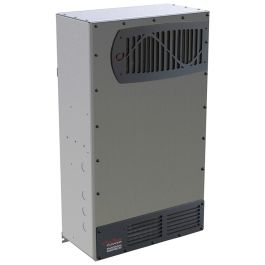I, as a Schneider customer, certainly don't agree with all the things they do to put up road blocks to the DIY crowd, but I do understand why they do some of it.
Companies like Schneider support their installers. An installer only needs to buy one configuration tool. The $600 is not for the USB stick, it is for the license to use the software to do the configuration. If a DIY person buys the stick for their one install, they are not the target customer for it. They want installers to do this type of setup as it would be just too easy to put in bad values. An error in configuration at that level could do more than just stop it from working, it could actually damage the equipment. While many of us DIY people do take the time to study what we are doing, to make sure we do it right, that might not be the case of every person who buys an inverter. They basically locked out controls that could be dangerous. If it just needed a password, then someone would just post the password, and anyone could poke around and ruin their equipment if they didn't understand what they were doing. So yes, $600 for the USB device and some software seems crazy, but it really is not that bad. For an installer who puts in several systems a year, it won't even register as an expense.
The other complaint about Schneider is the "nickel and dime" of having to buy each separate part. Again, this is a bigger picture choice on their part. If you are building a really small system, like mine with just one XW-Pro and nothing else... Having to buy the Gateway was a fairly big cost add. But if this was a large system to power a factory, with 6 XW-Pro's making 3 phase to run machines, and it also had five 600 volt charge controllers and a shipping container full of batteries.... This setup still only needs ONE Gateway to monitor and configure it. IF that capability was built into every device, you would now have the equivalent of 11 Gateways on your network. As the system gets bigger, it makes more sense.
Having the battery monitor as a separate device also does make sense. I may still get one, but for now, I am happy with voltage control. If (when) I change to LFP cells, I will probably go with either a BMS the XW can talk to, or a Xanbus battery monitor.
When I looked at other systems, there were certainly pros and cons. The OutBack SkyBox looked like a great idea. It rolled all the things a normal DIY user needs into a single box. Had it been available 6 months sooner, and had some better early reviews, I probably would have gone that way. It has a charge controller, that I would still not be using, but other than that, it is less powerful, and cost a lot more than I got the Schneider for, even with the extra cost of the gateway and the conduit box. For a single inverter, it is easy to set up with the Gateway, and no config tool is needed. Needing the gateway is no different than an Enphase system needing an Envoy.
My only HUGE complaint about Schneider is they just don't want to add functions in their built in software. They feel it does what it needs to do. I called them out on their sideways lies on their website about supporting energy time shifting AND AC coupling. Their fix was a change to the wording on the website. It is still a little misleading, but now has a little fine print to tell you some features only work in some configurations.
The all in one hybrid inverters are getting better. I don't think they are up to the quality of the Schneider gear, and none of them can take overloads like an XW can. Has anyone been able to make one of them use only excess solar for battery charging, and then zero the grid all day? I would love to see production and utility usage graphs on someone doing time of use energy shifting on an all in one. I don't think a Sol-Ark can do what I am making my Schneider do now. The time shifting ability in the new OutBack Mojave looks very limited and kind of crude. To make mine work the way I wanted it to, I had to add a PLC and write my own code, but the Schneider let's me do it. Can a Growatt do it?




